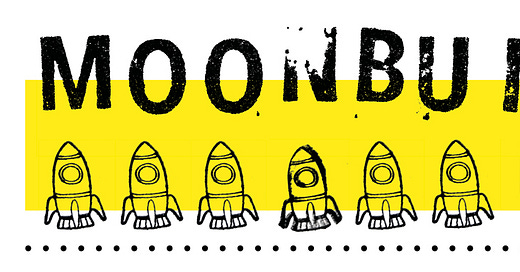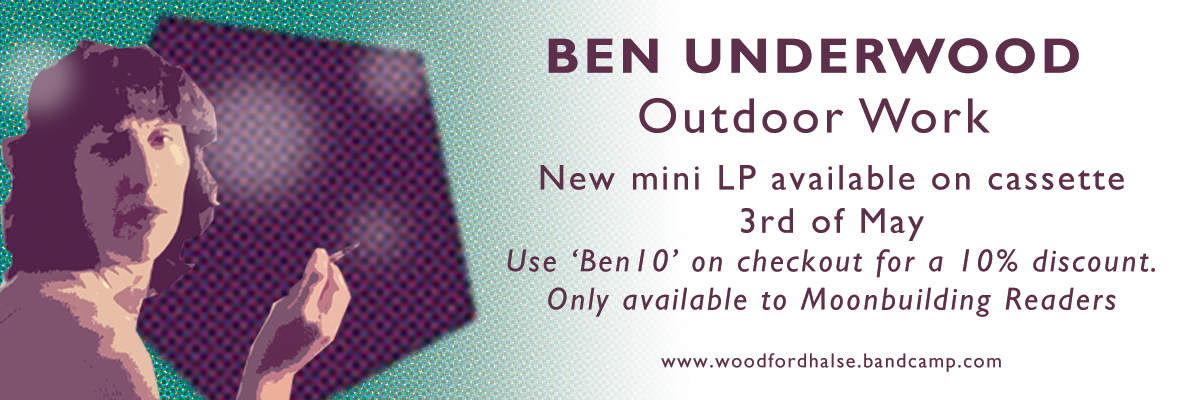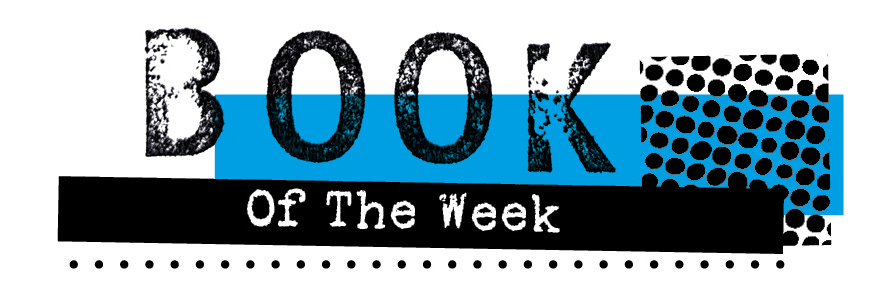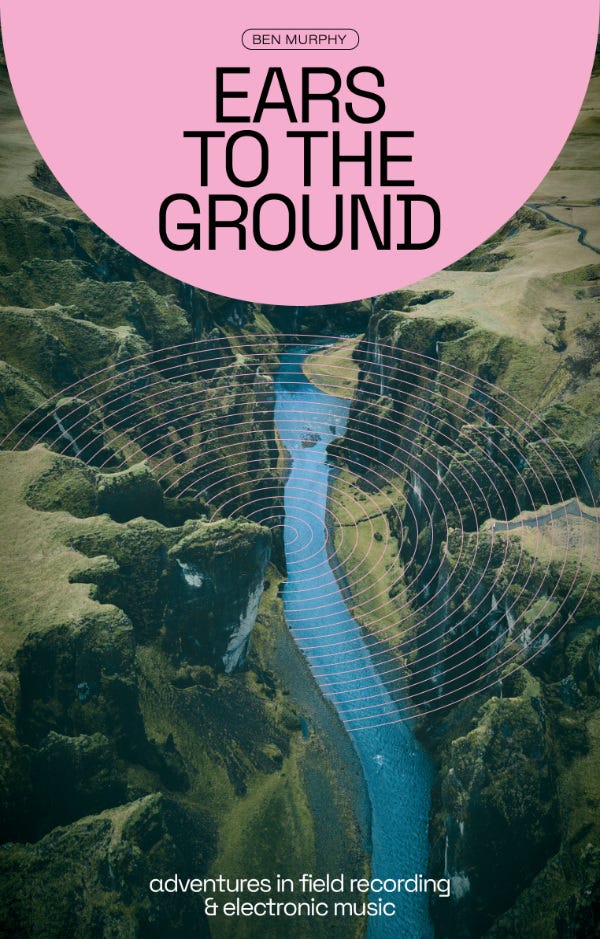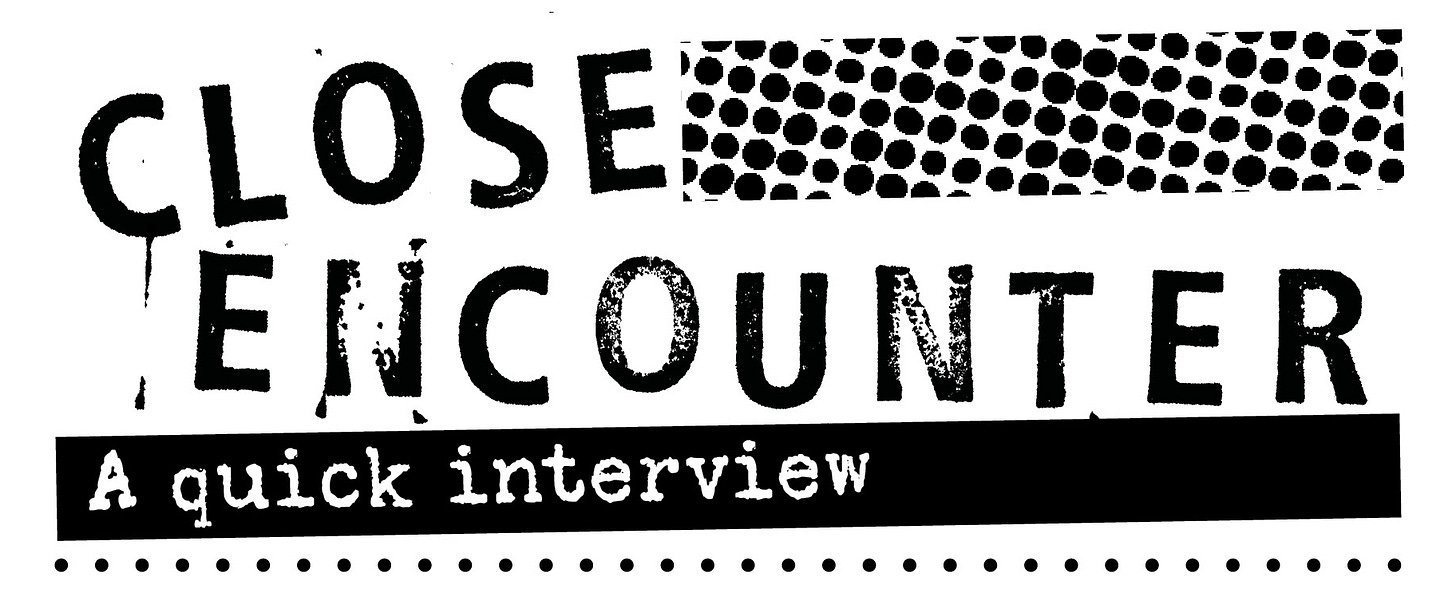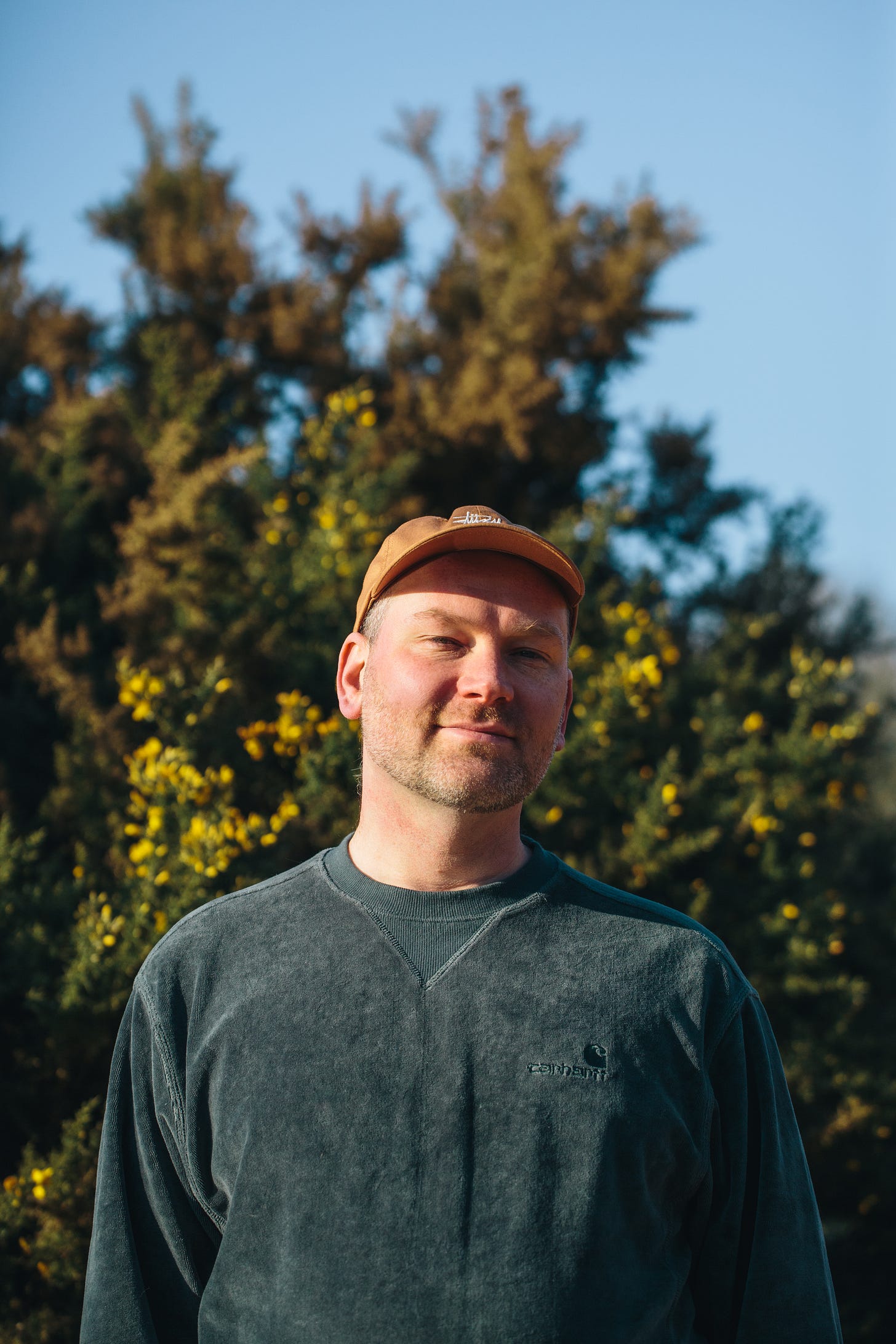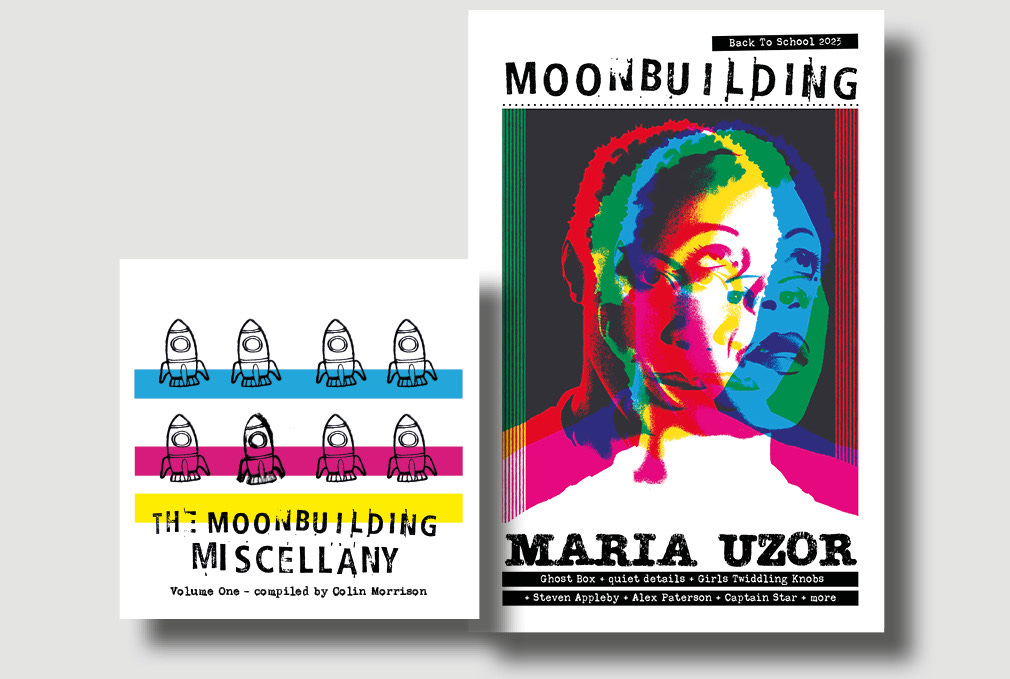Issue 17a / 10 May 2024
In part one of this week's injection of DIY electronic goodness... Book Of The Week: ‘Ears To The Ground – Adventures In Field Recording And Electronic Music’ + interview with author, Ben Murphy
Weather eh? A sunny bank holiday weekend? Whatever next? This weekend is looking pretty good too, which is great news for the Independent Label Market at Coal Drops Yard in London’s glittering King Cross tomorrow (11 May). I’m hoping to pop along at some point. It’s always time well spent.
Down to business. We’ve got another Book Of The Week for you in this issue. It’s insane how many good books there are out and about at the moment. As I say in the review below, my reading pile isn’t getting any smaller. I’m not getting through many novels at the moment.
If you are enjoying reading our wise words there are a few ways you can lend your support. Telling anyone who’ll listen all about Moonbuilding Weekly is very helpful, point them at moonbuilding.substack.com so they can sign up too. You can chip a few quid into our coffers (see link below) or even advertise (very reasonable rates). It all helps. Righto, let’s get on with it. See you this afternoon for part two.
Neil Mason, editor
moonbuildingmag@gmail.com
Issue 17 Playlist: See this afternoon’s mailout
Buy us a pint: ko-fi.com/moonbuilding
***ADVERTISE HERE***
Email moonbuildingmag@gmail.com
BEN MURPHY ‘Ears To The Ground – Adventures In Field Recording And Electronic Music’ (Velocity Press)
We are clearly in a most golden of golden periods for music books. I’ve written about a freshly minted tome in pretty much every newsletter this year so far. Which might not seem that remarkable if I was covering fiction, but these are niche, left-field music titles. And the pile is only getting bigger.
What’s really interesting, and Ben Murphy’s ‘Ears To The Ground’, is a great example of this, is that music journalists seem to be increasingly turning to books to ply their trade. While good music magazines remain vital (even if they are very thin on the ground) there’s finite space on their pages. I’ve always seen magazines as a snapshot. A book, well, that’s several hundred pages where a writer can really spread out.
You can see the appeal. Not least that it’s all you, with your name on the cover and everything that goes with that. And when the market is this ripe, no wonder we’re getting a rush of such excellent titles.
I know Ben Murphy from my time as a magazine editor. He was the editor of DJ Magazine and when he left to go freelance he did a whole load of work for me at Electronic Sound. He’s an excellent writer and as such his byline has popped up all over the place. He also has form when it comes to books. During lockdown he wrote drum ’n’ bass bible ‘Renegade Snares’ with his old pal and current DJ Mag editor Carl Loben.
‘Ears To The Ground – Adventures In Field Recordings and Electronic Music’, to give his book its full title, is Ben’s debut outing flying solo and it takes a long, hard look at how artists have used recordings made “in the field” as part of their musical output. And here’s the distinction about books being published at the moment. I think a few years ago you’d have expected this to be a rather dry blow-by-blow history. But it absolutely isn’t. This is Ben’s take, presented as chapters which are essentially a series of long-form features with spot-on choices of subject matter. Ben talks about the book in terms of “an exploration of some of the artists and sounds that I’ve found most interesting”. He also says it was “never intended to be exhaustive and there’s many more areas I could have explored”. It’s a really smart editorial brain at work and the result is his book done his way.
‘Ears To The Ground’ is geographically based. Part One is the “UK and Ireland” and Part Two is “Around The World”, it then breaks down into artists and regions. So Orkney and Edinburgh is Erland Cooper, Lord Of The Isles and Proc Fiskal, Norfolk is Leafcutter John and Oliver Payne, Ultramarine are Essex, Langham Research Centre and Broken English Club are Suffolk and Kent. Flora Yin-Wong is Wales, Kayla Painter Bristol, Scanner and Kate Carr are London, Haiku Salut Derbyshire. Further afield KMRU is Nairobi, Matmos are Baltimore and San Francisco, Heinali is Kyiv… and so it goes on.
I love that you can read it like a book, from cover to cover, but you can also dip in and out, like a magazine. Pick the artists you’re most interested in first and hoover up the rest when realise what a good read the whole flipping thing is. It’s such a thorough piece of work too. Each chapter is built from brand-new interviews, which in itself is no mean feat as there’s a lot of interviews here.
It’s one of those books, like Matthew Collins’ ‘Dream Machines’ the other week, where you’ll skim the contents page and not know where to start as it all sounds great. I especially enjoyed the sections on Ultramarine whose work is totally ingrained in Essex’s Blackwater Estuary, Kate Carr’s relationship with London and Heinali’s love letter to Kyiv.
Of course, it’s refreshing to see Ben has got a good balance here with plenty of female coverage. I know he thought long and hard about who to include and he hits all the right markers. Someone like Kate Carr of the excellent Flaming Pines label is, to my mind, a leading exponent of this kind of work and deserves a good deal more credit for her thoughtful and innovative work than she gets. There’s also a cracking section at the back that eyes up the next wave of artists working in this, I was going to field, let’s call it an area, the field is a given. Names here include the likes of Claire Rousay, NikNak and Ibukun Sunday.
‘Ears To The Ground’ is not only an excellent read, but it’s proof that this is a way forward for music writers who are finding it difficult to place more expansive work. If they could just slow down a little, my reading pile is already huge. And it’s full of fascinating titles like this. [NM]
‘Ears To The Ground – Adventures In Field Recording And Electronic Music’ by Ben Murphy is published by Velocity Press and is out now
Order your copy from Velocity Press or the Moonbuilding bookshop
BEN MURPHY
We catch up with the author of ‘Ears To The Ground’ and talk books verses magazines, why definitive isn’t necessarily best and how come he’s not in a hurry to write another book just yet
Interview: Neil Mason
Hello Ben, how’s things? What are you up to today?
“I’m good, thank you! The sun is shining here in Norwich. I’m working at home today, doing some writing and editing – might get in the garden later.”
I know you as a magazine editor/writer, what’s the appeal of books for you?
“With magazine articles there’s only so much you can say. Being concise and direct is good of course, but writing a book gives you the space to fully explore a subject, particularly when it’s a broad topic with lots of different elements. It was also a challenge that I wanted to take on.”
What’s the difference between writing for mags and writing a book? It’s not just the word count, is it?
“I’ve been writing magazine articles for 20 years now, and I normally have a good idea of how to structure each one, though they vary. One of the more difficult aspects of writing a book is how to sequence it, and how to make it all flow as a narrative. I had a solid outline for ‘Ears To The Ground’, but as I started to write many more areas I hadn’t thought of became apparent, and I had to expand the topic and fill in lots of blanks. Actually starting it was quite a challenge too. The intro came later on after I was a few chapters in, for instance.”
Books seem to have a permanence that magazines don’t have, don’t you think?
“I’ve been so used to the impermanence of my articles from month to month, and then forgetting about them. Some of the features I’ve written online have now disappeared as the websites have gone. With a book, people are continually engaging with it so it feels like it’s more of a living, breathing thing out in the world. It’s a nice surprise for me when people mention they’ve just read ‘Renegade Snares’.”
Ah yes, your first book ‘Renegade Snares’, about drum ’n’ bass. It was written with DJ Mag editor Carl Loben – how was that with two of you writing?
“It was great! We wrote a good part of it during the lockdowns, so we had a lot of time and space to think it through and discuss ideas. It’s really helpful having someone else to bounce ideas off, and with both of us being editors, we could fine-tune each other’s sections. It was quite a big book, so it helped in terms of sharing the load – and I also think it’s nice having the contrast of our different writing styles to break things up.”
This is your first title flying solo, how did you find it?
“It was hard work, but very rewarding. I was writing at the weekends and in between my day job, so I didn’t get out much. There was no safety net of someone else being able to appraise what I’d done and make suggestions before handing it in. But it gave me confidence that I can do it and work out how to get past the challenges I faced.”
Two books down, you can call yourself an author now, right?
“Yeah, I think so. But I think it will be a good while before I write another book.”
Let’s talk about the new book, what’s ‘Ears To The Ground’ about?
“‘Ears To The Ground’ is about how electronic artists are using field recordings in a huge variety of ways in their music. It’s not just about snippets of bird song, wind or water – field recordings of city life, conversation, nature, real-world objects, electromagnetic sounds and many more things can be used to evoke a sense of place and culture. They can be political, satirical, funny, and can add a human touch to music that can sometimes be too rigid or mechanical. I interviewed a lot of artists about their work, mostly from the UK and Ireland, but also around the world, creating a kind of travelogue.”
I was quite surprised when you told me you were writing a book about field recording. How did your interest in the subject come about?
“Though a lot of my writing and editing work has been about dance music, I’m into pretty much everything. I love soul, funk, jazz, indie rock, hip-hop and a lot of electronic music that’s outside the dance realm. Contributing regularly to Electronic Sound was quite freeing, as it allowed me to explore other aspects of my taste. I noticed that quite a few artists I was interviewing were using field recordings, and in ways that I’d never thought of. Then I wrote a piece for Bandcamp Daily about now-defunct Edinburgh label Firecracker Recordings and their own interesting use of found sounds, and it struck me that it was a huge, untapped subject. As I looked into it more, it became apparent that it was also a growing phenomenon, and certainly big enough to dedicate a book to.”
‘Ears To The Ground’ isn’t a history of the subject is it? You focus on electronic artists who use field recording in their work rather than pure field recordists?
“This is an important point. It’s not about field recordings in themselves. The music part to me is vital – ‘Ears To The Ground’ is categorically not an academic book. It’s ultimately about how we respond to and depict the world around us in musical form, and all the wonderful ways that different artists have interpreted it. The world is their collaborator.”
You make an exception for Chris Watson, which is fair enough when you consider his form isn’t it?
“Yes, and he is a musician too. Though today he might be best known purely for his location recordings for BBC programmes, the ‘Chernobyl’ soundtrack and various purely field recording-based albums, he started out in Cabaret Voltaire. It was his use of samples, field recordings and real-world objects in their work that was so influential ultimately, and his career is fascinating. He’s still working on musical projects too.”
I like how music books have become very personal takes on subjects. It’s not definitive, but rather your version of the subject. Discuss!
“Absolutely! I think with ‘Renegade Snares’, Carl and I wanted to present something definitive, a really wide-ranging history of drum ’n’ bass and what came just before it, but with ‘Ears To The Ground’ it’s just a snapshot, an exploration of some of the artists and sounds that I’ve found most interesting. It was never intended to be exhaustive and there’s many more areas I could have explored – maybe in volume two? To my mind, many of the big subjects have already been explored at length in music books, so people are turning to more niche subjects now. And ultimately, music is always a subjective experience. It’s fascinating to read how other people interpret it.”
It looks like there was a lot of planning involved, where did you start?
“I had a synopsis and chapter breakdown, which I agreed with the publisher, then I began to approach the people I knew I wanted to interview. That in itself took a while. Gradually I realised that I needed to speak with many more people, and so focused on getting the bulk of the interviews done and transcribed before I started writing it properly. In July last year I went to Sheringham on the Norfolk coast for a couple of days, rented a hotel room and got to work. It snowballed from there.”
I like how the book is structured, breaking it down into location and then picking out artists to focus on in each chapter. Why did you decide to do it like that?
“A sense of place was so important to ‘Ears To The Ground’. In most cases, artists are interpreting either the places where they live in sound, or places they’re fascinated by. It made sense to tackle it region by region initially. To start with, it was just going to be one artist per chapter, but it makes it much more interesting when you cover multiple artists and how they interpret a location.”
How much do you think location affects the work?
“Hugely. Kate Carr’s recordings of London communicate everything from her experience of lockdown to climate change and gentrification. Llyn y Cwn’s recordings at remote Neolithic sites and abandoned quarries in Wales evoke the deep history encoded in the landscape. Where we are inevitably effects what we make, and these artists make that explicit with their use of field recordings.”
How did you pick which artists to feature, or did they kind of pick themselves?
“They had to use field recordings a significant amount, and in a way that was more than just decoration. Scanner, KMRU, Lawrence English, Kate Carr and Matmos were all artists I knew I had to approach because their use of found sounds has been so varied, conceptual or creative.”
Do you have any particular favourite sections?
“I really enjoyed writing the chapter on the rusted relics of Orford Ness and Dungeness in the sound art and music of Langham Research Centre and Broken English Club. These locations are so evocative, and the records and the interviewees are so interesting that I was really able to bring the whole thing to life.”
Or any favourite interviews?
“I’m really proud of the Matmos chapter, it’s a proper deep dive into their incredibly fascinating and cool music. They were very insightful, but also funny. I also really enjoyed interviewing Natalia Beylis who is based in Ireland. Her work is brilliant and her deep thought on the subject provided great material.”
What do you hope people will take from reading your book?
“I hope they’ll find it stimulating and insightful, and I hope it helps them hear the world afresh. Having a field recorder myself, I’ve started making recordings everywhere, and it really makes you zero in on details you hadn’t noticed before.”
What’s next for you, book-wise?
“Nothing for a while! Ha-ha.”
Here’s a playlist compiled by Ben to accompany the book…
***ADVERTISE WITH US***
Email moonbuildingmag@gmail.com
A MESSAGE FROM THE MOTHERSHIP
SPRING SALE…WHILE STOCKS LAST…SPRING SALE…WHILE STOCKS LAST…
MOONBUILDING ISSUE 4, WAS £10 NOW £5 (+P&P). GRAB YOURS WHILE STOCKS LAST … MOONBUILDING.BANDCAMP.COM
The current issue of MOONBUILDING is full to the gills with the good stuff. On the cover, star-in-the-making Maria Uzor, we profile label-of-the-moment quiet details, there’s an incredible interview with Captain Star creator Steven Appleby, and Ghost Box’s Jim Jupp gets busy with our There’s A First Time For Everything questions.
We review a big pile of releases from labels including Castles In Space, Woodford Halse, Persistence Of Sound, Assai, Ahora, DiN, Werra Foxma, Ghost Box and many more. There’s a column from The Orb’s Alex Paterson and the world-famous Captain Star cartoon strip.
This issue’s CD is ‘The Moonbuilding Miscellany – Volume One’, which is put together by CiS supremo Colin Morrison. It’s a belter featuring tracks from the likes of Lo Five, Lone Bison, Twilight Sequence, Ojn, NCHX and more.
Moonbuilding Weekly is a Castles In Space publication.
Copyright © 2024 Moonbuilding

